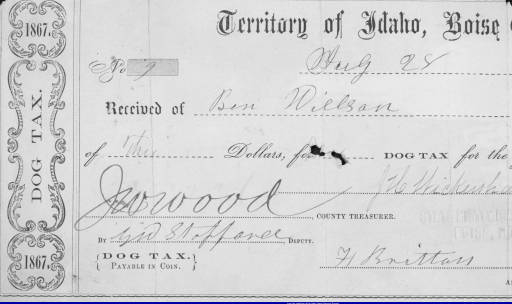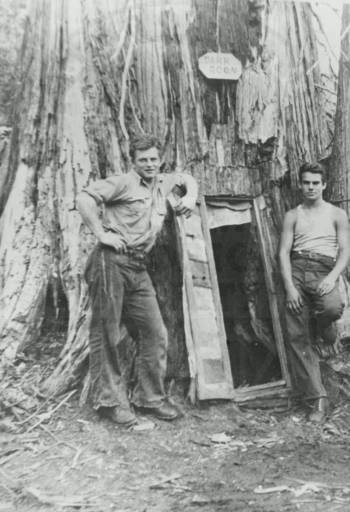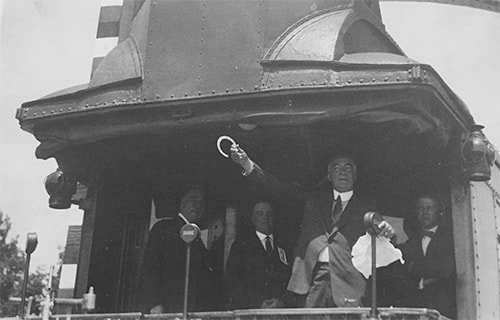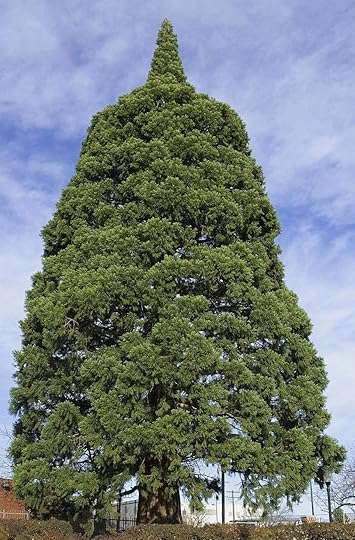Rick Just's Blog, page 197
May 29, 2019
The Idaho Stop
Today’s post is another in our occasional Then and Now series.
Bicycles have been in Idaho since territorial days. Unlike horse drawn conveyances, bikes were not replaced by automobiles.
In May, 1911, the Boise Evening Capital News was effusive about the future of the bicycle. “No question about it—the bicycle is coming into its own again. Its fine record in the war, its many-sided utility in modern business, its wonderful influence for health, coupled with its undoubted economy and convenience—all have combined to make it even more desirable than before.”
A.P. Tyler, the local Firestone dealer was enthusiastic about bicycles, and the “Non-Skid” tires Firestone was selling. “I look for a big year for the bicycle trade generally. (Bicycles) meet a distinct need in our modern life—as the only really practical self-propelled vehicle.”
Fast forward to 1982 when Idaho showed its love for bicycles in a unique way. The Legislature that year was revising traffic rules and decided to stop cluttering up judicial calendars with “technical violations” of traffic control devices, i.e., stop signs. That was the invention of a law that has become known as the Idaho Stop. Bike riders in Idaho can treat a stop sign the same way drivers treat a yield sign. That is, if the coast is clear they can roll right through it. A later revision to Idaho code made it legal for bike riders to treat a stop light the same way vehicle drivers treat a stop sign: Stop, check to see if the way is clear, then proceed.
Several other jurisdictions across the country have tried implementing the Idaho Stop for bicyclists. To date, Idaho is the only place it is legal statewide.
#idahohistory #idahostop
Bicycles have been in Idaho since territorial days. Unlike horse drawn conveyances, bikes were not replaced by automobiles.
In May, 1911, the Boise Evening Capital News was effusive about the future of the bicycle. “No question about it—the bicycle is coming into its own again. Its fine record in the war, its many-sided utility in modern business, its wonderful influence for health, coupled with its undoubted economy and convenience—all have combined to make it even more desirable than before.”
A.P. Tyler, the local Firestone dealer was enthusiastic about bicycles, and the “Non-Skid” tires Firestone was selling. “I look for a big year for the bicycle trade generally. (Bicycles) meet a distinct need in our modern life—as the only really practical self-propelled vehicle.”
Fast forward to 1982 when Idaho showed its love for bicycles in a unique way. The Legislature that year was revising traffic rules and decided to stop cluttering up judicial calendars with “technical violations” of traffic control devices, i.e., stop signs. That was the invention of a law that has become known as the Idaho Stop. Bike riders in Idaho can treat a stop sign the same way drivers treat a yield sign. That is, if the coast is clear they can roll right through it. A later revision to Idaho code made it legal for bike riders to treat a stop light the same way vehicle drivers treat a stop sign: Stop, check to see if the way is clear, then proceed.
Several other jurisdictions across the country have tried implementing the Idaho Stop for bicyclists. To date, Idaho is the only place it is legal statewide.
#idahohistory #idahostop

Published on May 29, 2019 04:00
May 28, 2019
Garden of Paradise
"Garden of Paradise" was the title Sallie Hume Douglas gave to her composition copyrighted in 1915. Over the years at least four people have taken credit for writing lyrics to that music. With various combinations of verse and chorus "Garden of Paradise" was called "Our Idaho," "Old Idaho," and finally "Here We Have Idaho," our state song. It's a song that has grown and changed, even going through a period of what you might call juvenile delinquency.
Before it became the state song, "Here We Have Idaho" was the school song of the University of Idaho. They called it "Our Idaho" or "Old Idaho." Even at that time, there was some question over which was the official version and who wrote the lyrics. No one knew who wrote the music. No one, that is, except the composer who discovered her song was being used without permission. She threatened to sue the University of Idaho, and in 1930, they reluctantly purchased rights to the song. In 1931, "Here We Have Idaho" became the state song.
Over the years there were many arguments over adaptations of the lyrics. The composer of the music threatened another lawsuit. And Idahoans just went on singing... singing of you, Ah, proudly, too, all our lives through, We'll go singing, singing of you, singing of Idaho.
 Sallie Hume Douglas penned Idaho's State Song.
Sallie Hume Douglas penned Idaho's State Song. 
Before it became the state song, "Here We Have Idaho" was the school song of the University of Idaho. They called it "Our Idaho" or "Old Idaho." Even at that time, there was some question over which was the official version and who wrote the lyrics. No one knew who wrote the music. No one, that is, except the composer who discovered her song was being used without permission. She threatened to sue the University of Idaho, and in 1930, they reluctantly purchased rights to the song. In 1931, "Here We Have Idaho" became the state song.
Over the years there were many arguments over adaptations of the lyrics. The composer of the music threatened another lawsuit. And Idahoans just went on singing... singing of you, Ah, proudly, too, all our lives through, We'll go singing, singing of you, singing of Idaho.
 Sallie Hume Douglas penned Idaho's State Song.
Sallie Hume Douglas penned Idaho's State Song. 
Published on May 28, 2019 04:00
May 27, 2019
Writing Home to Mom
In an earlier post we looked at postcards that the Idaho Department of Agriculture made available to the “boots” at Farragut Naval Training Station during World War II. They all had a goofy potato theme and are popular with postcard collectors.
The Navy supplied postcards for the trainees at Farragut, too. They weren’t quite as colorful and didn’t feature any vegetables. They were produced by the audio-visual department on the base by Sp(P)3c Stan Gelling.
Boots could also buy a packet of black and white photos of base activities that they could send back home. No doubt the pictures were carefully staged to avoid giving any secrets away.
If you enjoy these Idaho history posts, please know that it is important to LIKE, SHARE, or COMMENT. Facebook’s algorithm will weed these posts out of your newsfeed if you do not interact with them.
#idahohistory #farragut #idahopostcards

The Navy supplied postcards for the trainees at Farragut, too. They weren’t quite as colorful and didn’t feature any vegetables. They were produced by the audio-visual department on the base by Sp(P)3c Stan Gelling.
Boots could also buy a packet of black and white photos of base activities that they could send back home. No doubt the pictures were carefully staged to avoid giving any secrets away.
If you enjoy these Idaho history posts, please know that it is important to LIKE, SHARE, or COMMENT. Facebook’s algorithm will weed these posts out of your newsfeed if you do not interact with them.
#idahohistory #farragut #idahopostcards

Published on May 27, 2019 04:00
May 26, 2019
Our New Jersey Lincolns
Boise has two statues of President Abraham Lincoln. The first is on the capitol grounds in front of Idaho’s statehouse. It is the oldest Lincoln statue in the West. It was first installed at the Soldiers Home in 1915, then moved to the Idaho Veterans Home in East Boise. In 2009 it was moved to its present location. It's one of six duplicates of a piece sculpted by Alphonso Pelzer. The original statue is in New Jersey.
The other Lincoln is a giant sculpture, 9 feet tall, and he’s sitting on a bench. You can sit with him in Julia Davis Park. Why two Lincolns in Idaho? He signed the act creating Idaho Territory in 1863. Fun facts: the sitting Lincoln sculpture is a copy of one created by Gutzon Borglum. In spite of his weird name, you need to know that he carved the faces on Mount Rushmore and that he was born in St. Charles, Idaho Territory, in 1867. Oh, and the original of the sitting Lincoln is also in New Jersey.

The other Lincoln is a giant sculpture, 9 feet tall, and he’s sitting on a bench. You can sit with him in Julia Davis Park. Why two Lincolns in Idaho? He signed the act creating Idaho Territory in 1863. Fun facts: the sitting Lincoln sculpture is a copy of one created by Gutzon Borglum. In spite of his weird name, you need to know that he carved the faces on Mount Rushmore and that he was born in St. Charles, Idaho Territory, in 1867. Oh, and the original of the sitting Lincoln is also in New Jersey.

Published on May 26, 2019 04:53
May 25, 2019
Taxing Dogs
So, I was recently doing a little research on dog taxes in Idaho because… well, who wouldn’t? Plus, I was intrigued by the photo below of an 1867 receipt for a dog tax in Boise.
I found that the Boise tax raised $200 in 1869 when it was $5 per canine. But I also stumbled across this snarky little piece from the Caldwell Tribune, of June 24, 1893, and decided to share it.
“It has accidentally leaked out that the city council recently passed a number of ordinances relating to matters of considerable interest to the tax payers of Caldwell, among other things an important franchise has been granted, a dog tax has been levied and the salaries of officers have been fixed. It is regrettable that those matters should obtain publicity without the sanction of the council, and it is hoped that greater discretion will be exercised in the future. Every precaution should be used in preventing subjects of general concern from reaching the public ear. Many ill-advised city councils have, adapted the rule of officially publishing their ordinances, but the plan has not been found to work satisfactorily. It often engenders a spirit of criticism and opposition, extremely aggravating to the council and promotive of public discord. The proper time
for people to become apprised of such transactions is after all possibility of protest has expired.”
A bit of satire about local government is always welcome, is it not?
#idahohistory #dogtax #caldwellhistory

I found that the Boise tax raised $200 in 1869 when it was $5 per canine. But I also stumbled across this snarky little piece from the Caldwell Tribune, of June 24, 1893, and decided to share it.
“It has accidentally leaked out that the city council recently passed a number of ordinances relating to matters of considerable interest to the tax payers of Caldwell, among other things an important franchise has been granted, a dog tax has been levied and the salaries of officers have been fixed. It is regrettable that those matters should obtain publicity without the sanction of the council, and it is hoped that greater discretion will be exercised in the future. Every precaution should be used in preventing subjects of general concern from reaching the public ear. Many ill-advised city councils have, adapted the rule of officially publishing their ordinances, but the plan has not been found to work satisfactorily. It often engenders a spirit of criticism and opposition, extremely aggravating to the council and promotive of public discord. The proper time
for people to become apprised of such transactions is after all possibility of protest has expired.”
A bit of satire about local government is always welcome, is it not?
#idahohistory #dogtax #caldwellhistory

Published on May 25, 2019 04:00
May 24, 2019
Five Down in Boise
Jack Dempsey was about as famous as anyone got in the America of the 1920 and 30s. He was the heavyweight champion of the world from 1919 to 1926. He lost the title in September of 1926 when Gene Tunney beat him on points in a Philadelphia fight. Famously, he explained to his wife after the loss, “Honey, I forgot to duck.” President Ronald Reagan resurrected that line when his wife Nancy visited him in the hospital after a 1981 assassination attempt.
Perhaps assuming he would not forget to duck the next time out, Dempsey toyed with the idea of taking another shot at the title. A comeback attempt was rumored in 1931, though he was nearing 40. He was on a tour of the country doing exhibition fights, often with local opponents. He’d take on two, three, even four men, bringing each one down to the roars of the crowd.
Twice, Dempsey took on five opponents. The first time was on August 31, in Spokane, Washington. He made quick work of them. His second quintuplet match was in Boise, Idaho, on September 17.
The Idaho Statesman set the scene in a September 19, 1931 article: “Jack Dempsey, once king of all champions, came to Boise and more than 6000 persons, comprising the largest fight crowd in the history of Idaho, flocked to the fairgrounds to watch the famed “Manassa Mauler” toy with five opponents in an exhibition that lasted seven rounds.”
If seven rounds sounds like a full fight against five men, note that it all added up to 12 minutes 59 seconds.
The first man to go against Dempsey was “Indian” Jack Smith from Oklahoma. He lasted 57 seconds, but only because there was some dancing around. When Dempsey hit the man with one shot of his left the man went down. Smith gamely got back up to receive two quick jabs from Dempsey’s right, which knocked him out.
Louis O’Taril next went a couple of rounds with the “Mauler,” never landing a blow. Hank Potter, from St. Anthony, was the first to actually hit Jack. The famous fighter came back with a bevy of hard punches, giving the Idaho man little chance to strike another blow. At the end of two minutes, Dempsey was holding him up.
A well-known welterweight fighter from Preston took on Dempsey next. Marious LaVell Lamoreaux, known as “Battling Lamoreaux” had gone a couple rounds with Dempsey the night before in Logan, Utah. He withstood another two rounds in Boise, but Dempsey broke his jaw on both sides sparring with him in Reno a couple of weeks later, ending the man’s career.
Mickey McCafferty, a fast-hitting welterweight from Pocatello next gave Dempsey his best. Dempsey “parried and dodged, escaping all injury with ridiculous ease,” the Statesman reported.
Rumors of a comeback to the contrary, Dempsey never did make a challenge again for the heavyweight championship.
#boise #jackdempsey #idahohistory
 Jack Dempsey getting off the plane in Boise for a serious of exhibition bouts at the fairgrounds in 1931. Photo courtesy of the Idaho State Historical Society physical photo collection.
Jack Dempsey getting off the plane in Boise for a serious of exhibition bouts at the fairgrounds in 1931. Photo courtesy of the Idaho State Historical Society physical photo collection.
Perhaps assuming he would not forget to duck the next time out, Dempsey toyed with the idea of taking another shot at the title. A comeback attempt was rumored in 1931, though he was nearing 40. He was on a tour of the country doing exhibition fights, often with local opponents. He’d take on two, three, even four men, bringing each one down to the roars of the crowd.
Twice, Dempsey took on five opponents. The first time was on August 31, in Spokane, Washington. He made quick work of them. His second quintuplet match was in Boise, Idaho, on September 17.
The Idaho Statesman set the scene in a September 19, 1931 article: “Jack Dempsey, once king of all champions, came to Boise and more than 6000 persons, comprising the largest fight crowd in the history of Idaho, flocked to the fairgrounds to watch the famed “Manassa Mauler” toy with five opponents in an exhibition that lasted seven rounds.”
If seven rounds sounds like a full fight against five men, note that it all added up to 12 minutes 59 seconds.
The first man to go against Dempsey was “Indian” Jack Smith from Oklahoma. He lasted 57 seconds, but only because there was some dancing around. When Dempsey hit the man with one shot of his left the man went down. Smith gamely got back up to receive two quick jabs from Dempsey’s right, which knocked him out.
Louis O’Taril next went a couple of rounds with the “Mauler,” never landing a blow. Hank Potter, from St. Anthony, was the first to actually hit Jack. The famous fighter came back with a bevy of hard punches, giving the Idaho man little chance to strike another blow. At the end of two minutes, Dempsey was holding him up.
A well-known welterweight fighter from Preston took on Dempsey next. Marious LaVell Lamoreaux, known as “Battling Lamoreaux” had gone a couple rounds with Dempsey the night before in Logan, Utah. He withstood another two rounds in Boise, but Dempsey broke his jaw on both sides sparring with him in Reno a couple of weeks later, ending the man’s career.
Mickey McCafferty, a fast-hitting welterweight from Pocatello next gave Dempsey his best. Dempsey “parried and dodged, escaping all injury with ridiculous ease,” the Statesman reported.
Rumors of a comeback to the contrary, Dempsey never did make a challenge again for the heavyweight championship.
#boise #jackdempsey #idahohistory
 Jack Dempsey getting off the plane in Boise for a serious of exhibition bouts at the fairgrounds in 1931. Photo courtesy of the Idaho State Historical Society physical photo collection.
Jack Dempsey getting off the plane in Boise for a serious of exhibition bouts at the fairgrounds in 1931. Photo courtesy of the Idaho State Historical Society physical photo collection.
Published on May 24, 2019 04:00
May 23, 2019
Darkroom in a Tree
Cedar trees have a smell that most people find pleasant. The natural oils of the tree are responsible for the scent, but their purpose isn’t so you can put your wedding dress in a cedar chest. Well, not exactly. The oils make the wood toxic to insects and fungus to protect the tree, which also helps protect your wedding dress.
Have you ever noticed that many old growth cedars are hollow? That’s because younger trees may not have developed the self-protecting oil yet, so the heartwood rotted. As the tree develops, it develops the oils it needs to stave off bugs and fungus, making for a strong shell but a hollow core. That’s great news for critters of various kinds that like to nest or hide inside.
It was also great news for photographers, in at least one instance. Charlie Poxleitner taught Civilian Conservation Corps students photography. This is a picture of their darkroom, near Avery. The darkroom was inside the hollow of a cedar tree. The picture is probably from the mid 1930s, and is part of the Idaho State Historical Society Digital Collection.
#idahohistory #cedartree

Have you ever noticed that many old growth cedars are hollow? That’s because younger trees may not have developed the self-protecting oil yet, so the heartwood rotted. As the tree develops, it develops the oils it needs to stave off bugs and fungus, making for a strong shell but a hollow core. That’s great news for critters of various kinds that like to nest or hide inside.
It was also great news for photographers, in at least one instance. Charlie Poxleitner taught Civilian Conservation Corps students photography. This is a picture of their darkroom, near Avery. The darkroom was inside the hollow of a cedar tree. The picture is probably from the mid 1930s, and is part of the Idaho State Historical Society Digital Collection.
#idahohistory #cedartree

Published on May 23, 2019 04:00
May 22, 2019
A Whistle-stop Horseshoe
In June 1923, President Warren G. Harding went on a whistle-stop tour through Southeastern Idaho, speaking from the back of a train in Pocatello, Blackfoot, and Idaho Falls before chugging north into Montana.
Idaho Governor C.C. Moore, quoted in the June 30, 1923 edition of the Idaho Statesman, said, “President Harding is a bigger man than many give him credit for being.” This was probably not a reference to his size, as Governor Moore seemed to admire him for other qualities. “He is a careful thinker, not hasty in action and when he makes a decision sticks to it.”
Harding was a popular president while he was in office. It wasn’t until after his death that several scandals surfaced, including Teapot Dome. An extra-marital affair also came to light. Nowadays, he usually ranks down toward the bottom on the presidential most-admired lists.
One noteworthy event—as judged by a writer always on the lookout for oddities—took place when Harding spoke from the back of the train in Pocatello. You can see a horseshoe in his hand in the photo below. No, he wasn’t promoting the pastime of pitching horseshoes. He had been presented with this special object to commemorate his visit.
T.J. Atkins, a farrier from Boise, had forged the shoe using metal from a clevis arrangement that had been used to hitch oxen together. This particular hunk of metal had been used on oxen on an Oregon Trail emigrant train which was attacked by Indians in 1857 near Sinker Butte in what became Owyhee County. The hardware had been found by Atkins and some of it given to the Idaho State Historical Society.
#idahohistory #warrengharding
 The photo, along with a descriptive caption, are part of the Idaho State Historical Society’s physical photo file at the state archives.
The photo, along with a descriptive caption, are part of the Idaho State Historical Society’s physical photo file at the state archives.
Idaho Governor C.C. Moore, quoted in the June 30, 1923 edition of the Idaho Statesman, said, “President Harding is a bigger man than many give him credit for being.” This was probably not a reference to his size, as Governor Moore seemed to admire him for other qualities. “He is a careful thinker, not hasty in action and when he makes a decision sticks to it.”
Harding was a popular president while he was in office. It wasn’t until after his death that several scandals surfaced, including Teapot Dome. An extra-marital affair also came to light. Nowadays, he usually ranks down toward the bottom on the presidential most-admired lists.
One noteworthy event—as judged by a writer always on the lookout for oddities—took place when Harding spoke from the back of the train in Pocatello. You can see a horseshoe in his hand in the photo below. No, he wasn’t promoting the pastime of pitching horseshoes. He had been presented with this special object to commemorate his visit.
T.J. Atkins, a farrier from Boise, had forged the shoe using metal from a clevis arrangement that had been used to hitch oxen together. This particular hunk of metal had been used on oxen on an Oregon Trail emigrant train which was attacked by Indians in 1857 near Sinker Butte in what became Owyhee County. The hardware had been found by Atkins and some of it given to the Idaho State Historical Society.
#idahohistory #warrengharding
 The photo, along with a descriptive caption, are part of the Idaho State Historical Society’s physical photo file at the state archives.
The photo, along with a descriptive caption, are part of the Idaho State Historical Society’s physical photo file at the state archives.
Published on May 22, 2019 04:00
May 21, 2019
The City of Trees
Boise is known as the city of trees. Captain Benjamin Bonneville’s men were said to have proclaimed, “Les Bois, Les Bois!” (the trees, or the woods) when they first spotted the cottonwoods along the Boise River in 1833. One could understand their excitement after spending some days traipsing through the desert.
There are an estimated 3.5 billion trees in the city. Okay, that’s my estimate. It may be off a little.
Some of those trees have a claim to fame. The Anne Frank Memorial includes a chestnut grown from the seed of a tree she often talked about in her famous diary. One passage reads, "The two of us looked out at the blue sky, the bare chestnut tree glistening with dew, the seagulls and other birds glinting with silver as they swooped through the air, and we were so moved and entranced that we couldn't speak." Only 11 saplings came to the US from the original tree.
Over on the Basque Block, the Cyrus Jacobs-Uberuaga Boarding House has a large tree out front that came from the Gernika'ko Arbola or Tree of Gernika. The original tree was a gathering place for Basques since Spanish King Ferdinand and Queen Isabella stood beneath it and swore an oath to protect the Basques. William Wordsworth memorialized the tree in a sonnet called The Oak of Gernika.
The original oak in the Basque Country has been replanted several times from saved acorns. The resilience of the Tree of Gernika is legendary. In 1937 the city of Gernika was carpet-bombed by Spanish fascist dictator Francisco Franco. About 1,000 citizens were killed and the town was all but leveled. The Tree of Gernika remained intact. The incident was later depicted in Pablo Picasso’s painting, Guernica.
The Boise Gernika tree was planted in 1988 and is today robust with a healthy crop
of acorns each year.
Sadly, trees planted on the capitol grounds by Presidents Benjamin Harrison, Theodore Roosevelt, and William Howard Taft had to be cut down when the underground wings were added to the building (dedicated in 2010). Then Representative Max Black, who is a wood carver, salvaged wood from the trees so that local artists could work with it. Several examples of their art can be seen in the capitol’s statuary hall.
Another tree that once graced the capitol grounds was one grown from a seedling that went to the moon with the Apollo 11 astronauts. It came down during the statehouse expansion, too. Take heart, there is another moon tree in Boise. It came from a seed that went to the moon aboard Apallo 14, and it now grows on the grounds of Lowell Scott Elementary. It was planted in 1977, but the loblolly pine hasn't been doing well lately.
One of the most beloved trees in Boise is the giant sequoia that stood for many years on St. Lukes property on Jefferson St. It was planted in 1912 by Dr. Fred Pittenger as a seedling sent to Boise by John Muir. The 98-foot-tall tree sported Christmas lights for many years. In the mid-80s arborists discovered that the lights had killed the top of the tree. They did some surgery, redirecting a healthy branch to serve as a new top. That’s what gives it the odd shape, almost as if a small tree is growing out of a large one (photo).
In preparation for new construction at St. Lukes, the massive tree was moved across the street in 2017. The move was carefully done, but Boiseans are still holding their collective breath, waiting to see if the tree survives the trek. So far, so good. If it survives, it could be a fixture in the city for a couple thousand years.
#idahohistory #boisehistory #cityoftrees
There are an estimated 3.5 billion trees in the city. Okay, that’s my estimate. It may be off a little.
Some of those trees have a claim to fame. The Anne Frank Memorial includes a chestnut grown from the seed of a tree she often talked about in her famous diary. One passage reads, "The two of us looked out at the blue sky, the bare chestnut tree glistening with dew, the seagulls and other birds glinting with silver as they swooped through the air, and we were so moved and entranced that we couldn't speak." Only 11 saplings came to the US from the original tree.
Over on the Basque Block, the Cyrus Jacobs-Uberuaga Boarding House has a large tree out front that came from the Gernika'ko Arbola or Tree of Gernika. The original tree was a gathering place for Basques since Spanish King Ferdinand and Queen Isabella stood beneath it and swore an oath to protect the Basques. William Wordsworth memorialized the tree in a sonnet called The Oak of Gernika.
The original oak in the Basque Country has been replanted several times from saved acorns. The resilience of the Tree of Gernika is legendary. In 1937 the city of Gernika was carpet-bombed by Spanish fascist dictator Francisco Franco. About 1,000 citizens were killed and the town was all but leveled. The Tree of Gernika remained intact. The incident was later depicted in Pablo Picasso’s painting, Guernica.
The Boise Gernika tree was planted in 1988 and is today robust with a healthy crop
of acorns each year.
Sadly, trees planted on the capitol grounds by Presidents Benjamin Harrison, Theodore Roosevelt, and William Howard Taft had to be cut down when the underground wings were added to the building (dedicated in 2010). Then Representative Max Black, who is a wood carver, salvaged wood from the trees so that local artists could work with it. Several examples of their art can be seen in the capitol’s statuary hall.
Another tree that once graced the capitol grounds was one grown from a seedling that went to the moon with the Apollo 11 astronauts. It came down during the statehouse expansion, too. Take heart, there is another moon tree in Boise. It came from a seed that went to the moon aboard Apallo 14, and it now grows on the grounds of Lowell Scott Elementary. It was planted in 1977, but the loblolly pine hasn't been doing well lately.
One of the most beloved trees in Boise is the giant sequoia that stood for many years on St. Lukes property on Jefferson St. It was planted in 1912 by Dr. Fred Pittenger as a seedling sent to Boise by John Muir. The 98-foot-tall tree sported Christmas lights for many years. In the mid-80s arborists discovered that the lights had killed the top of the tree. They did some surgery, redirecting a healthy branch to serve as a new top. That’s what gives it the odd shape, almost as if a small tree is growing out of a large one (photo).
In preparation for new construction at St. Lukes, the massive tree was moved across the street in 2017. The move was carefully done, but Boiseans are still holding their collective breath, waiting to see if the tree survives the trek. So far, so good. If it survives, it could be a fixture in the city for a couple thousand years.
#idahohistory #boisehistory #cityoftrees

Published on May 21, 2019 04:00
May 20, 2019
Treasure in the Lava Fields
Finding a quirky tidbit of history is for me akin to running across a nugget of gold. When that story is about lost gold, all the better.
Bingham County has a couple of tales of gold waiting to be found. One told in the 1937 Federal Writers Project book Idaho, a Guide in Word and Picture , tells of a ne'er-do-well freighter named Blackie who was known to imbibe more than was strictly prudent. Acquaintances of his goaded him into robbing the stage coming from the Salmon mines to Blackfoot. Fortified with a bottle of courage, he did so, only to find that a box full of gold bars is too heavy to pack around.
The story is short of details such as what year this took place, what happened to the stagecoach driver, and what Blackie’s last name might have been. I found nothing about it in a search of newspapers from a 30-year period. Leaving aside that lack of evidence, for the sake of a good story, let’s just stagger forward.
Blackie buried his heavy box of loot among the lavas at the side of the road, then went into Blackfoot to have a few drinks with his buddies. Wound up by the tale of so much gold one couldn’t carry it, his friends convinced Blackie to take them to the hiding spot.
Upon reaching the robbery site, the men were greeted by gunfire from sketchily described law enforcement officers. Whether or not any of his friends caught a bullet is left out of the story. Blackie, in true tales-of-the-West fashion was wounded, living only long enough to give a vague description of where the gold was buried.
The gold was never found. Or never there. Or, there, but found and spent in some tropical paradise. Maybe you’ll write the ending to this one.
This post appeared originally as a column in the Blackfoot Morning News.
#idahohistory #binghamcountyhistory #idahogold
Bingham County has a couple of tales of gold waiting to be found. One told in the 1937 Federal Writers Project book Idaho, a Guide in Word and Picture , tells of a ne'er-do-well freighter named Blackie who was known to imbibe more than was strictly prudent. Acquaintances of his goaded him into robbing the stage coming from the Salmon mines to Blackfoot. Fortified with a bottle of courage, he did so, only to find that a box full of gold bars is too heavy to pack around.
The story is short of details such as what year this took place, what happened to the stagecoach driver, and what Blackie’s last name might have been. I found nothing about it in a search of newspapers from a 30-year period. Leaving aside that lack of evidence, for the sake of a good story, let’s just stagger forward.
Blackie buried his heavy box of loot among the lavas at the side of the road, then went into Blackfoot to have a few drinks with his buddies. Wound up by the tale of so much gold one couldn’t carry it, his friends convinced Blackie to take them to the hiding spot.
Upon reaching the robbery site, the men were greeted by gunfire from sketchily described law enforcement officers. Whether or not any of his friends caught a bullet is left out of the story. Blackie, in true tales-of-the-West fashion was wounded, living only long enough to give a vague description of where the gold was buried.
The gold was never found. Or never there. Or, there, but found and spent in some tropical paradise. Maybe you’ll write the ending to this one.
This post appeared originally as a column in the Blackfoot Morning News.
#idahohistory #binghamcountyhistory #idahogold

Published on May 20, 2019 04:00



